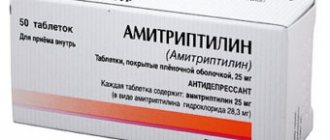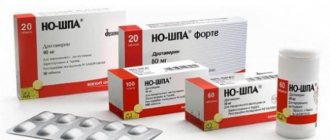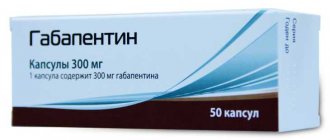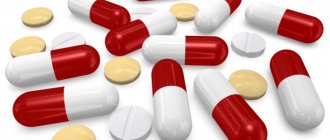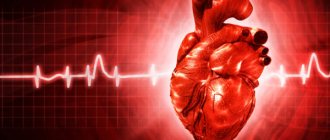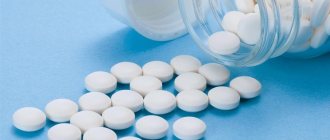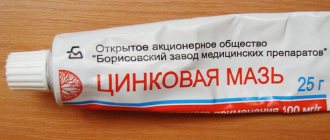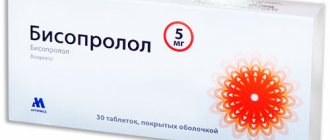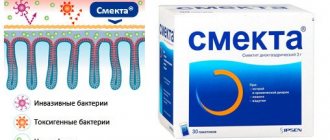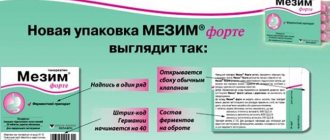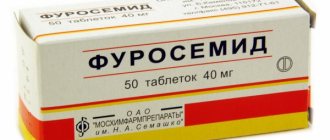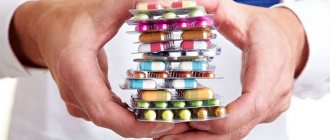Almost all adults know what nitroglycerin helps with. If there is pain behind the sternum, you need to put a tablet under your tongue and, of course, not instantly, but quickly enough, the pain will go away. It's good when it happens this way.
However, what to do if nitroglycerin does not help, how many tablets can you take safely and does this medicine have any side effects? Most people, even those who often experience pain in the heart area, find it difficult to answer these questions.
“Regular” glycerol trinitrate is taken to quickly stop an attack of angina.
The information and video in this article will help expand the scope of knowledge about nitroglycerin, because often we do not ask, and the attending physician does not explain the details of taking the drug, limiting himself to the same thing - if you get sick, then put the tablet under your tongue.
Overdose
Increased side effects are a sign that an overdose has occurred during therapy.
Extremely high doses (more than 20 mg/kg) lead to methemoglobinemia, cyanosis, dyspnea and tachypnea, and orthostatic collapse. For mild symptoms, it is recommended to ensure sufficient supply of clean air into the room (open a window), lie down and elevate your legs. In more severe cases, the assistance of a doctor in an inpatient setting will be required. Treatment is aimed at eliminating intoxication and shock. Sometimes blood transfusions, hemodialysis, and oxygen therapy are indicated.
Pharmacokinetics of nitroglycerin
During an angina attack, after using sublingual tablets, capsules, sprays, aerosols or gingival patches, the antianginal effect of nitroglycerin develops within two minutes. The vasodilating effect lasts for half an hour.
The bioavailability of the drug when used in oral forms is one hundred percent. Maximum plasma concentrations are achieved after five minutes.
Long-acting nitrates are used to prevent the development of angina attacks. Their effect develops slowly, over an hour, as nitroglycerin is gradually released from the capsule and absorbed in the intestines.
Nitroglycerin in a prolonged form is able to maintain vasodilating and analgesic effects for six hours. The effect of the drug weakens as it is converted into active metabolites, with which it is eliminated from the body in the urine.
For reference. The skin ointment begins to act within half an hour. The antianginal effect of nitroglycerin when applied externally lasts for four hours from the moment of application.
The skin patch consists of a multilayer system that provides a continuous supply of nitroglycerin. Due to the gradual penetration of nitroglycerin through the skin into the blood, a constant therapeutic concentration of the drug is maintained in the body.
The patch releases 10% of the initial nitroglycerin values every 12 hours. The antianginal effect occurs within one to three hours and lasts up to ten hours.
special instructions
Before taking the medicine, you should first read the following special recommendations:
It is prohibited to drink alcoholic beverages while using the drug; the spray should be used with caution in people who have suffered a heart attack or acute heart failure; cerebrovascular diseases are a relative contraindication; You can avoid a sharp decrease in blood pressure if you inject the solution while sitting or lying down; headache is a side effect that is often recorded at the beginning of treatment; the use of medication in older people increases the risk of adverse reactions (often fainting, dizziness); During therapy, it is necessary to refrain from driving vehicles and engaging in potentially hazardous activities that require increased concentration and speed of psychomotor reactions.
Frequent use of Nitrospray can lead to addiction, which results in a decrease in the effectiveness of the product. Sensitivity to the active substance is restored after a break in therapy. Store out of the reach of children and animals, away from fire and flammable objects at a temperature not exceeding 30°C. You can buy Nitrospray in pharmacies without presenting a prescription form. The shelf life is 3 years from the date indicated on the original packaging. It is prohibited to use medicine that has expired.
Description and composition
Sublingual tablets are white and flat-cylindrical in shape. There is a chamfer on one side of the element. 1 tablet contains the active ingredient – nitroglycerin – 0.5 mg. Auxiliary components: sugar, glucose, potato starch.
Sublingual spray is a colorless, transparent solution. The active ingredient of this dosage form is also nitroglycerin – 0.4 mg. Auxiliary component – ethanol.
Concentrate for the preparation of infusions is a colorless transparent solution. 1 ml of concentrate contains 1 mg of active substance. There are auxiliary components: sodium chloride, dihydrogen phosphate, water for injection, dextrose.
Composition and action
Analogues of a medicinal product such as Nitrospray may have a slightly different composition, for example, in tablets, in addition to nitroglycerin, lactose, potato starch, and magnesium stearate are used. This is necessary in order to give the medicine a more pleasant taste.
Nitrospray for the heart expands the walls of blood vessels, reduces the load on the heart and venous return. The drug redistributes the blood and enriches it with oxygen, thereby improving myocardial blood flow and preventing shortness of breath.
In addition to its effect on the heart, the medication relaxes the muscles of the gallbladder, bile ducts, and urinary tract. After application, the result of relief for the patient occurs within 2 minutes, and the effect lasts for about 30 minutes.
The medication causes dilation of the coronary vessels, while the flow of blood becomes faster and the lack of oxygen stops. You can use the medication not only if you have problems with the heart muscle, but also with pulmonary edema.
Nitroglycerin suppresses the vascular component, which affects the appearance of pain in the heart area. In most cases, after the first use of the spray, there is a significant improvement.
The spray is administered under the tongue, since in this area the active substance is completely absorbed into the systemic bloodstream. Thanks to this use, the components do not affect the liver in any way, acting only on the main organ - the cardiac system. The drug is eliminated from the blood quickly - in about 4-5 minutes.
The drug has a large number of analogues, which are identical both in composition and in indications for use. Nitroglycerin, which is part of the drug Nitrospray, is also present in them.
| The cheapest | Popular analogues | Analogues in composition and indications |
| Cardiket | Nitroglycerine | Nitroglycerine |
| Carthiket Retard | Cardiket | Nitrocore |
| Nitrocord | Isoket | Nitrogranulong |
| Nitrosorbitol | Iso-Mik | Nitro-Mick |
| Nitroglycerine | Monocinque Retard | Nitromax |
| Nitrosprint |
All these drugs have in common the composition and indications for use. Only the doctor decides which medication the patient should take.
Analogs and price
If Nitroglycerin is not available in the pharmacy or if prescribed by a doctor, it is allowed to use a medicine that is similar in composition and pharmacological effect . Nitroglycerin analogues also effectively relieve acute conditions and help in the long-term treatment of pathology. These include:
- Nitrocor;
- Nitrosorbide;
- Nitrogranulong;
- Dikor Long;
- Isodinite.
The price of Nitroglycerin tablets is affordable for everyone and is about 40 rubles. But Nitroglycerin in ampoules for intravenous administration is much more expensive and averages 420 rubles.
Nitroglycerine
Nitroglycerine. Indications for use
Oral forms
The drug is used orally to relieve acute angina attacks, as well as to prevent relapses of attacks (retarded forms). Nitroglycerin can also be used to reduce the area of ischemia during a heart attack (as part of complex treatment) and left ventricular failure.
Use for non-cardiac pathologies
Sometimes nitroglycerin is used as part of complex therapy for biliary dyskinesia (biliary dyskinesia) for the purpose of antispasmodic effects on the biliary tract.
In ophthalmology, nitroglycerin is used for embolism of the central retinal artery (CRA).
Intravenous use
The solution is used intravenously for:
- heart attack;
- post-infarction unstable angina;
- severe left ventricular failure;
- pulmonary edema;
- hypertensive crisis due to HF (heart failure);
- the need to create controlled hypotension during surgery;
- refractory (stable) angina pectoris;
- CAS embolism.
Temporary cessation of therapy
Nitroglycerin instructions for use contain information that in order to prevent the development of nitrate tolerance (addiction to the drug and a decrease in the therapeutic effect), it is necessary to observe the so-called “nitrate-free intervals” (night intervals between taking tablets for eight to twelve hours).
Maintaining intervals between taking Nitroglycerin helps increase the effectiveness of treatment.
Most often, addiction develops when long-acting (retard) forms of nitroglycerin are prescribed. If nitrate tolerance develops, it is necessary to pause treatment. After discontinuation of nitrate therapy for a certain period of time, sensitivity is completely restored.
Indications and contraindications for the use of nitroglycerin
Nitroglycerin is used very widely. Almost every elderly patient suffering from periodic heart pain carries with him tablets or a spray of this drug, which can be taken immediately as soon as an attack is felt. The effect occurs very quickly, pain is relieved, and heart function improves. The main reason for using nitroglycerin is coronary heart disease. The drug is used for:
- Paroxysms of angina pectoris (pain in the heart) and to prevent them;
- Recovery in the post-infarction period.
Intravenous administration of nitroglycerin is necessary in the following cases:
- Acute myocardial infarction;
- Angina pectoris resistant to other types of treatment;
- Post-infarction and unstable angina;
- Acute left ventricular failure with pulmonary edema;
- Controlled hypotension, which is established during surgical interventions to reduce the volume of blood loss;
- Thrombosis of the central retinal artery.
In addition to cardiac pathology, indications for the use of nitroglycerin may include acute pancreatitis, attacks of biliary colic, dyskinesia of the esophagus and intestines, and impaired motility of the gallbladder.
There are also contraindications to taking nitroglycerin. Among them:
- Individual intolerance;
- Concomitant use of phosphodiesterase inhibitors (sildenafil);
- Severe hypotension;
- Lactose and galactose intolerance caused by hereditary causes;
- Cardiac hemotamponade;
- Adhesive pericarditis.
Nitroglycerin should be prescribed with caution:
- Patients with cerebral hemorrhages, increased intracranial and intraocular pressure;
- With congestive heart failure, when the pressure in the left ventricle is very low;
- For anemia;
- Hyperfunction of the thyroid gland;
- Pathologies of the liver and kidneys;
- Valvular heart defects;
- Tendency to hypotension.
It is better to refrain from taking nitroglycerin for pregnant women and nursing mothers. Its safety in children and adolescents has not been established, so nitroglycerin is not usually used before the age of 18.
The listed contraindications apply to all dosage forms of nitroglycerin. In addition, long-acting drugs are contraindicated for people with increased intestinal and gastric motility and impaired absorption, and intravenous administration of nitroglycerin is prohibited for traumatic brain injuries, severe atherosclerosis, shock, hemotamponade of the pericardium and pericarditis, toxic pulmonary edema.
The instructions for use of nitroglycerin contain a large amount of information regarding not only the mechanism of action, but also possible adverse reactions, complications during treatment, drug interactions, which the patient should be aware of, therefore, after prescribing this medicine, it is better to immediately read the instructions and follow the recommendations of your doctor
Adverse reactions from the use of nitroglycerin occur in the cardiovascular, nervous system, and digestive organs. Often, while taking nitroglycerin, patients complain of dizziness, headaches, and tachycardia, which is associated with rapid vasodilation. These effects develop most often and usually disappear within 10-20 minutes from the moment of administration. To restore blood supply to the brain vessels and eliminate headaches, it is better to take a horizontal position, lowering your head and slightly raising your legs. Less commonly, nausea, dry mouth, and dyspepsia are possible.
In case of an overdose of the drug, symptoms from the nervous system appear: the patient is agitated, disoriented, may be inhibited, and in rare cases it can lead to psychosis. Severe intoxication with nitroglycerin is accompanied by collapse, bluish skin, breathing problems, and methemoglobin appears in the blood, causing hypoxia.
The likelihood of such effects dictates the need to strictly follow the prescribed dosage and regimen of nitroglycerin. Very rare, but still not excluded, allergic reactions and local negative manifestations - itching, burning, redness of the skin, dermatitis.
If adverse reactions develop during intravenous infusions, they are stopped immediately. If skin products are used, they should be removed (ointments, patches). Taking into account the expansion of cerebral vessels and possible fainting, the patient is placed with his legs elevated and his head slightly lowered. Normal blood pressure is usually restored within 15-20 minutes.
For methemoglobinemia caused by an overdose of nitroglycerin, ascorbic acid and oxygen therapy are indicated; for acute renal failure against this background, hemodialysis is necessary. In rare cases, doctors are forced to resort to blood transfusions.
Features of use and interaction with other medications
When prescribing Nitroglycerin, first of all, the patient should read its instructions and pay attention to contraindications and cases of side effects. Taking the drug requires special attention: Taking the drug requires special attention:
Taking the drug requires special attention:
- The spray should not be used to treat children, as the active substance can negatively affect the child’s body.
- During pregnancy, the medication is contraindicated, but a cardiologist can prescribe it to a pregnant woman in case of urgent need.
If you are hypersensitive to the drug and its constituent substances, it is better to refuse treatment and use another drug. In the presence of hypotension, the use of Nitroglycerin can be dangerous to human health and life, therefore, in this case, consultation with a doctor is required.
It should be used with caution in patients with anemia, atherosclerosis and circulatory disorders in the brain. In addition, Nitroglycerin can be addictive, so it should be taken according to a certain schedule to avoid this. In addition, Nitroglycerin can be addictive, to avoid this it should be taken according to a certain scheme
In addition, Nitroglycerin can be addictive, so it should be taken according to a certain schedule to avoid this.
During treatment with this drug, it is necessary to stop operating various mechanisms, since while taking Nitroglycerin, inhibition and other negative consequences may develop that interfere with the control of a particular vehicle.
Do not use the drug with medications such as:
- calcium channel blockers;
- vasodilators;
- antidepressants.
During treatment, it is better to avoid alcohol, which can enhance the effect of the drug, which can negatively affect the body. An increased content of the active substance in the blood can be caused by simultaneous use of the medication with Aspirin and its derivatives.
Nitroglycerin has the following benefits:
- Helps stop heart attacks in a short time.
- It has a convenient spray form.
- Has a low cost.
- It is highly effective.
The drug has certain indications and contraindications, as well as side effects. In case of drug overdose, emergency measures must be taken as soon as possible. In some cases, hospitalization may be required.
When choosing Nitroglycerin for the treatment of heart or gastrointestinal diseases, you should be extremely careful with the use of the substance. To avoid or minimize the risk of developing dangerous conditions, you should follow the recommendations of a specialist and not exceed the prescribed dose.
Combination with other drugs
Nitroglycerin (indications for use contain information about the interaction of the drug with other drugs when used together) should not be taken simultaneously with alcohol or alcohol-containing medications.
Ethanol enhances vasodilation and additionally poisons the body with toxins. The general intake of the drug and alcoholic beverages can lead to cardiac arrest (even in small quantities).
Interaction of Nitroglycerin components with other medications when used together:
- Do not take with vasodilator drugs; it can lead to cardiac arrest.
- Concomitant use with medications that lower blood pressure is prohibited.
- Nitroglycerin is not combined with cardiac medications (which normalize the functioning of the cardiovascular system).
- Drugs that reduce receptor sensitivity reduce the effect of the active element nitroglycerin.
- Medicines that affect the psychological state. Increased nervousness and depression are possible.
- Diuretic medications reduce the effectiveness of nitroglycerin, but increase the likelihood of side effects.
- Aspirin increases the concentration of nitroglycerin, which increases the likelihood of developing a negative reaction to the second drug. The effect of addiction to the drug also accelerates.
Simultaneous use with drugs that increase potency is prohibited, since both drugs have a dilating effect on blood vessels.
Nitroglycerin description of the drug, principle of action
“Nitroglycerin” belongs to the category of antianginal drugs, nitrates, that is, it promotes the release of nitric oxide in the blood vessels, which relieves tension from smooth muscles. Due to this, the myocardial oxygen demand decreases, reducing the load on the heart.
“Nitroglycerin” normalizes blood flow in the areas of the main human muscle affected by ischemia, stabilizes the jumping pressure. Thanks to it, patients with coronary artery disease and angina can tolerate physical activity more easily.
"Nitroglycerin" is known for several possibilities:
- restore the flow of oxygen to the myocardium;
- reduce the need for large amounts of this compound;
- dilate coronary vessels, relieving spasm;
- relieve heart pain.
This necessitates its use in the following pathologies:
- angina pectoris;
- myocardial infarction;
- heart failure.
“Nitroglycerin” is indicated not only in a difficult period or during an attack, but also to prevent the listed diseases. The drug comes in tablets, injection solution, and in the form of a patch. Which form is needed in a particular case is determined by the severity of the patient’s condition.
The attack is quickly stopped with a tablet placed under the tongue. When a patient in acute condition is admitted to the hospital, he receives Nitroglycerin intravenously. The big advantage of the medicine is its almost instant effect.
Nitroglycerin tablets are available to almost everyone due to their low cost. It ranges from 25 to 80 rubles.
Composition of Nitroglycerin
Depending on the dosage form, only the composition of the auxiliary components and the concentration of the active substance changes. Description of the components of Nitroglycerin depending on the form of release.
| Components | Brief description of components | |
| The active substance is included in all release forms | Nitroglycerine | Relieves pain in the heart area and dilates blood vessels |
| Tablets to dissolve behind the cheek | ||
| Auxiliary elements in the tablet | Crospovidone | Allows the tablet to quickly disintegrate under the influence of saliva and ensures rapid absorption of components |
| Lactose | Gives tablets the desired structure and sweet taste | |
| Macrogol | Normalizes the activity of the gastrointestinal tract and has a laxative effect | |
| Povidone | Removes toxins from the body | |
| Capsules for dissolution under the tongue | ||
| Additional components in the capsule | Butylated hydroxytoluene | Extends the shelf life of capsules |
| Sunflower oil | To give the desired consistency | |
| Shell composition | Azorubine | Colors the drug red |
| Gelatin | Gives the desired jelly-like structure and facilitates | |
| Glycerol | To give a homogeneous structure and combine components | |
| Nipagin | Extends the shelf life of the drug | |
| Injection | ||
| Additional solution composition | Dextrose | Accelerates the absorption of medication |
| Potassium dihydrogen phosphate | Combines constituent components | |
| Water for injections | To give the desired concentration | |
| Sodium chloride | Normalizes heart function and dilates blood vessels | |
| Spray | ||
| Auxiliary component in the spray | Ethanol 95% | To extend shelf life and desired structure |
| Ointment | ||
| Additional components in the ointment | Lanolin | To give a viscous consistency and facilitate application of the product to the skin. |
| Medical Vaseline | ||
Long-acting tablets, drops and patches based on Nitroglycerin are produced by several manufacturing companies with different variations of components.
Instructions for use of Nitroglycerin method and dosage
If the patient does not adhere to the recommended doses, this can lead to an overdose, which has the following symptoms:
- headache and dizziness;
- numbness of the limbs;
- blueness of the skin of the hands and lips;
- a feeling of compression in the temples;
- weakness;
- dyspnea;
- abnormal heart rhythm;
- elevated temperature;
- limb spasms.
For first aid in case of overdose, the patient needs to lie down and raise his legs slightly. This is necessary in order to enhance venous return. Nitroglycerin is eliminated from the body very quickly, and relief should come very quickly.
If such manipulations do not produce any results, you need to call an ambulance, which will give an injection of sympathomimetics - phenylephrine or methoxamine.
Nitrospray (nitroglycerin) cannot be combined with other vasodilators, antipsychotics and antihypertensive drugs. Such a combination will lead to the fact that both medications will not bring any therapeutic results.
Important! You should not drink alcohol during treatment with Nitrospray. Such a combination can be fatal! To prevent complications, Nitroglycerin is recommended to be taken as prescribed by a doctor.
To prevent complications, Nitroglycerin is recommended to be taken as prescribed by a doctor.
Nitroglycerin tablets are taken (sublingually) under the tongue, held in the mouth until completely dissolved, without swallowing.
Nitroglycerin should be taken immediately when the first signs of an angina attack appear or before expected physical activity or emotional stress. Single dose – 1 tablet. In case of stable angina pectoris, the effect may occur with a smaller dose; in this case, it is recommended to spit out the remaining tablet that has not had time to dissolve.
If there is no therapeutic effect after taking 2 Nitroglycerin tablets, you should immediately consult a doctor.
Spray sublingual
Injected on or under the tongue, preferably in a sitting position, while holding your breath. After spraying, the spray is not swallowed immediately, but is held by closing the mouth for a few seconds.
To avoid complications, Nitroglycerin should be used as prescribed by a doctor.
If after using 3 doses over 15 minutes the condition does not improve, you should consult your doctor.
The maximum single dose is 3 doses of spray.
If the indication for the use of Nitroglycerin is the prevention of angina attacks, the drug is used 1 dose 5-10 minutes before the expected load or stress.
The spray package should not be shaken before use. When spraying, the bottle must be held vertically.
Infusion solution
Administration of Nitroglycerin using a conventional fluid transfusion system ensures dosage accuracy by counting the number of drops of fluid being transfused. Before administration, the Nitroglycerin solution is first diluted in a 0.9% sodium chloride solution or a 5% glucose (dextrose) solution to a concentration of 0.01%. No other solvents should be used.
It is advisable to use glass and polyethylene tubes, since the active substance is absorbed on the walls of polyvinyl chloride tubes (losses can be 40-80%). Nitroglycerin solution is quickly destroyed in light, so the transfusion system and bottles must be shielded with light-proof material. Storing the solution in an opened ampoule is not allowed.
The initial rate of administration of the solution is 0.5-1 mg per hour, the maximum rate is 8-10 mg per hour.
Recommended concentrations and rates of administration of Nitroglycerin are: 1 mg/h (0.0166 mg/min) - 24 mg per day via an automatic dispenser (solution volume 1 mg/ml) or 240 mg per day via an intravenous system (solution volume 0 .1 mg/ml); injection rate – 3-4 drops per minute (1 ml corresponds to 20 drops).
The duration of therapy is determined by clinical indications and can vary from several hours to 2-3 days.
If signs of overdose occur, you should immediately put the patient in a horizontal position, raising his legs, and also seek medical help.
Dosage forms and features of taking nitroglycerin
Nitroglycerin can be prescribed intravenously or in the form of tablets, sprays, or patches. A solution of the drug is used for intravenous administration. Administration of the medicine through the skin or mucous membrane of the gums is considered very effective. To do this, use drops, tablets, sprays that are taken under the tongue.
Nitroglycerin should be taken as soon as pain appears, or even as a preventative measure if the patient has to exercise or perform activities that provoke heart pain. In the first case, the number of tablets can reach up to three; in the second, it is usually enough to take just one. The onset of the effect is judged by the reduction and disappearance of pain; monitoring of blood pressure and pulse is mandatory.
The modern pharmacological market offers a wide selection of both forms and names of nitrate-containing drugs. Analogues of regular nitroglycerin in tablets - nitrocardin, nitrocor, long-acting nitrates - sustak mite, sustak forte, nitrogranulong. A common aerosol containing nitroglycerin is nitromint, the spray is called nitrospray, plates for buccal use are trinitrolong, patches are deposit 10 and nitropercutene TTC.
To absorb the medicine through the blood vessels of the skin, a special patch soaked in nitroglycerin is prescribed. Tablets can be sublingual, acting quite quickly, but prolonged forms are also available, designed for long-term effects.
The dosage, dosage form and regimen are determined by the pathology for the treatment of which the cardiologist prescribes nitroglycerin - angina pectoris, heart attack, hypertensive crisis, etc.
taking nitroglycerin under the tongue
During an attack of heart pain, take a tablet or capsule of nitroglycerin under the tongue until it dissolves; the average dose for a pain attack is 0.5-1 milligram. If the first tablet does not work, it is recommended to take the next one no earlier than half an hour later. If the pain has passed, but the tablet still has not dissolved, it can and even should be removed from the mouth.
In most patients, the pain is relieved within the first few minutes after taking nitroglycerin, but if after 5 minutes the heart still hurts, then you can add half a milligram of the drug. The maximum number of tablets per attack is up to three. If they do not work, you need to immediately call an ambulance, because the pain may indicate a myocardial infarction.
For frequently recurring episodes of angina, it is more advisable to prescribe long-acting forms of nitroglycerin, but if an acute attack develops against this background, the patient needs to additionally take nitroglycerin under the tongue.
Nitrates for preventive purposes are prescribed in the form of long-acting tablets (extended-release). They are taken orally with water before meals. The dosage of nitroglycerin is 2.9 mg, up to two tablets per dose, the frequency of use is 3-4 times a day. In case of severe pathology, the dosage of the drug can be increased to 5.2 mg.
Long-acting nitrates act more slowly, most of them are inactivated in the liver, so the effectiveness is lower than that of “sublingual” drugs. With regular use, the maximum number of tablets per dose should not be more than two.
Films or drops that penetrate the oral mucosa are much more effective. Drops are instilled under the tongue, the film is glued to the gum. These drugs are indicated both for eliminating a painful attack and for preventing angina pectoris (during periods of physical activity, for example).
Transdermal patches with nitroglycerin ensure a uniform and long-term release of the drug into the bloodstream through the skin. They are indicated for patients with chronic circulatory failure after heart attack. It is advisable to begin treatment with them in a hospital setting, and when the maximum effective dose is reached, the patient is sent home.
In addition to patches, penetration of the drug through the skin is achieved by using an ointment, which is applied to an area of the body that is devoid of hair and the possibility of friction with clothing.
nitroglycerin spray
Spray and aerosols are popular and convenient forms of using nitroglycerin. They are used for attacks of pain in the heart, as well as for incipient or developed pulmonary edema. In a sitting position, the patient needs to make 1-2 presses on the bottle dispenser, while holding his breath. After the drug enters the oral cavity, the effect occurs within a few minutes.
The maximum dose of a spray or aerosol for a painful attack is 3 presses, for pulmonary edema - up to four. To prevent an attack of pain before physical activity, the patient can take one dose of the drug.
Intravenous administration of nitroglycerin is indicated for myocardial infarction and other severe forms of coronary heart disease. It is important to carefully calculate the rate of administration of the drug, otherwise side effects cannot be avoided. If you use a special dispenser, it is possible to use even undiluted nitroglycerin, because the device itself will calculate at what intervals and in what quantity it should be administered to the patient. When using a regular dropper, the doctor calculates the number of drops per unit of time.
Treatment by intravenous infusion can be carried out for 2-3 days; repeated administration of nitroglycerin is not prohibited if necessary. During administration, the doctor must monitor blood pressure levels to prevent severe hypotension.
Nitroglycerin is often taken not only for angina attacks, but also for high blood pressure in combination with other antihypertensive drugs. This is especially justified for chest pain and shortness of breath against the background of a hypertensive crisis. The dosage of the drug is the same as for angina pectoris - up to three tablets with an interval of 5-10 minutes. If the pain does not go away, the pressure continues to be high, you must immediately call an ambulance.
Nitroglycerin aerosol
Consultation with a specialist is required!
The information is posted on the site for informational purposes only. Consultation with a specialist is required.
in the text, incorrect review or incorrect information in the description, then we ask you to report this to the site administrator.
Reviews posted on this site are the personal opinions of the people who wrote them. Don't self-medicate!
"Nitroglycerin-aerosol" - a new original drug
In recent years, the acceleration of the pace of life and stress have caused an increase in diseases of the cardiovascular system, including coronary heart disease (CHD).
IHD is an atherosclerotic lesion of the coronary artery system, leading to coronary insufficiency and the development of angina pectoris (angina), sudden death, degeneration, necrosis and sclerosis of the myocardium.
The occurrence of an attack of angina is directly dependent on the workload of the heart, which increases with physical and emotional stress and is often combined with arterial hypertension (AH) and circulatory failure (CI).
Currently, in many countries (Italy, England, Germany, Hungary) there are aerosol preparations of nitroglycerin: “Nitro-dur”, “Glytrin-spray”, “Nitrolingual-spray”, “Nitromint”.
Nitroglycerin in the form of sublingual tablets often in a critical situation may not give the expected effect.
What is Nitroglycerin used for?
The main direction of use of the drug is the elimination of cardiovascular pathologies.
Conditions requiring medication:
- Periodic or regular spasms of blood vessels, including those of the eyeball.
- Pressing, dull or sharp pain in the heart area.
- Impaired blood supply to the myocardial muscle (middle muscular layer of the heart).
- Infarction or pre-infarction conditions caused by a sharp increase in pressure.
- Impaired functioning of the heart muscle.
- Spasmodic constrictions in the digestive tract, also acute pancreatitis and impaired functioning of the gallbladder.
- Edema in the lung tissue (in complex therapy).
- To lower blood pressure before surgery. This condition allows for less blood loss.
Depending on the indications, the treating specialist selects not only the course of therapy, but also the appropriate dosage form.
Side effects and drug interactions
Nitrospray, like any other medicine, has side effects. Reviews from cardiologists and the instructions for use of Nitrospray indicate that the drug can cause the following symptoms:
- decreased blood pressure;
- dizziness and headache;
- tachycardia;
- feeling of heat;
- dry mouth;
- weakness;
- burning sensation under the tongue.
In rare cases, patients complain of nausea, vomiting, abdominal pain, lethargy, anxiety, skin rash and itching, and blurred vision.
It is important for patients to remember that this drug, when combined with certain other drugs, can cause unwanted effects. For example, the hypotensive effect of nitroglycerin may be enhanced
The instructions for use of Nitrospray indicate that this is possible when combining the medication:
- with vasodilators (drugs from the group of vasodilators);
- antihypertensive medications (lowering blood pressure);
- angiotensin-converting enzyme inhibitors (medicines that are included in modern standards of treatment for arterial hypertension and chronic heart failure);
- neuroleptics, tricyclic antidepressants (psychotropic drugs used in the treatment of psychoses, severe mental disorders, depressive states);
- phosphodiesterase type 5 inhibitors (widely used by specialists in the treatment of erectile dysfunction).
Contraindications
Nitroglycerin (indications for use and contraindications are reflected in the instructions for the drug) has relative and absolute prohibitions on use.
The medicine cannot be used for the following disorders in the body:
- Deterioration of the cardiovascular system due to a sharp decrease in blood pressure.
- Decreased heart rate or irregular rhythm.
- Pathological or genetic abnormalities in the structure of the heart.
- Thickening of the outer lining of the heart (cardiac sac).
- The presence of excess fluid in the heart sac.
- Edema of the lung tissue.
- Increased intracranial pressure of any nature, including as a result of injury.
- Hemorrhage in parts of the brain.
- Increased intraocular pressure of closed-angle type.
- Epileptic seizures and other diseases accompanied by voluntary muscle contraction.
- If you experience severe dryness in the mouth or blurred vision after using nitroglycerin, discontinuation of the drug is required.
- Intolerance to the components of nitroglycerin or an allergic reaction to them. But if these reactions develop only to additional elements, then it is necessary to change one type of drug to another, focusing on the composition.
If these contraindications exist, Nitroglycerin is replaced with analogues (only by a cardiologist). It is prohibited to use the medicine without a 12 hour break. There will be an accumulation of the drug in the body, which will lead to a decrease in its effectiveness.
Nitroglycerin is taken under the supervision of a doctor according to an individual course in the presence of diseases:
- Impairment of the liver or kidneys in any form. Medications taken orally are excluded completely. The injection or patch is used under the supervision of a specialist.
- Increased amount of cholesterol in the vessels of the brain and other disorders of blood supply in this organ.
- Changes in pressure in different body positions (vertical, horizontal).
- A strong decrease in the concentration of hemoglobin in the blood.
- Reduced blood volume in vessels of various origins.
- Severe headaches (nitroglycerin makes them worse).
- Impaired functioning of the thyroid gland.
- Diabetes mellitus, some types of the drug contain glucose, full familiarization with the composition of the drug is required.
- If the patient is in shock, only injections are allowed.
These pathologies require careful use of Nitroglycerin or its replacement. For severe pain attacks in the heart area, it is recommended to use injections only in hospital settings. Chewing tablets and capsules is prohibited due to excessive absorption of components into the bloodstream and an increased likelihood of side effects.
After a long course, a gradual elimination of the medication is required, otherwise the pain in the heart area may increase. During Nitroglycerin therapy, it is recommended to avoid driving vehicles and working with increased attention. Since taking it can cause dizziness and severe headaches, which reduces concentration.
Overdose
An overdose is possible if you ignore the recommendations from the instructions included with Nitrospray. Nitroglycerin can cause a decrease in blood pressure, headache, reflex tachycardia, facial flushing, dizziness, vomiting, diarrhea, a feeling of heat, and drowsiness. When using not too many doses, the patient should be placed on a sofa or bed so that his legs are in an elevated position.
In severe cases, when taking a large number of doses, symptoms such as cyanosis, a feeling of lack of air, rapid shallow breathing, orthostatic collapse, and methemoglobinemia (the appearance of an increased amount of methemoglobin in the blood) are recorded. With such manifestations of overdose, doctors use methods to treat intoxication and shock (the volume of circulating blood must be replenished, the use of norepinephrine and/or dopamine, etc. is necessary).
What is nitroglycerin
Nitroglycerin is a drug that belongs to the group of nitrates of organic origin and is used in cardiology as a venous dilator.
The action of the drug is based on its ability to release NO, which is a natural relaxation factor of the vascular endothelium and an activator of guanylate cyclase.
As a result, there is an increase in the concentration of c-GMP (cyclic guanosine monophosphate), which causes muscle relaxation of smooth muscle fibers that make up the walls of venules and veins. For reference. Nitroglycerin has significant antianginal, antispasmodic effects, and also has a muscle relaxant effect on smooth muscle cells in the walls of the bronchi, blood vessels, gastrointestinal tract, and ureters.
Nitroglycerin use in cardiology
After consuming the drug, significant vasodilation occurs. The greatest impact is on the coronary arteries and
meningeal vessels. When administered intravenously, peripheral vessels dilate and cardiac preload decreases.
Due to blood flow redistribution:
- the pressure in the vessels of the pulmonary circulation decreases (pulmonary circulation);
- symptoms of pulmonary edema regress;
- cardiac afterload decreases;
- the degree of O2 consumption by the myocardium decreases.
Attention. Due to the action of nitroglycerin, changes in blood flow in the coronary arteries occur, with an increase in blood supply to ischemic foci. This effect is most important in ischemic heart disease (angina) and myocardial infarction.
Nitrate is capable of inhibiting vascular resistance (the coronary arteries and peripheral vessels are most sensitive to this effect).
Nitroglycerin also helps to enhance the contractile function of the heart muscle and normalize metabolic processes in the heart muscle.
The analgesic effect is provided due to the central effect of inhibition of the sympathetic influence and suppression of the vascular component of pain.
Release forms
The solution is produced in the form:
- sublingual metered dose aerosol;
- nitroglycerin spray sublingual;
- sublingual drops;
- sublingual capsules and table;
- caps. and table with prolonged effect (retard)
- concentrate for the production of infusion solution;
- ampoules;
- skin patch;
- ointments;
- gingival films.
Prices for Nitroglycerin
The cost of nitroglycerin capsules produced by the Russian pharmaceutical company Lumi is 20 rubles for forty capsules of 0.5 milligrams.
Nitrocor tablets, produced by the Russian pharmaceutical company Pharmstandard, cost about 65 rubles (40 tablets of 0.5 milligrams).
Nitroglycerin tablets, Pharmstandard campaign - 43 rubles.
Medisorb campaign tablets – 70 rubles.
Perlinganite ampoules, produced by the Belgian company YSB Farshim S.A. cost 800 rubles for 10 ampoules (10 milliliters of 0.1% solution).
Nitroglycerin spray (Nitromint) from the Hungarian Egis campaign costs about 150 rubles. Nitroglycerin analogues in the form of a spray, made in Russia:
- Pharmstandard – 100 rubles;
- Medisorb -105 rubles.
List of analogues
Note! The list contains synonyms for Nitrospray, which have a similar composition, so you can choose a replacement yourself, taking into account the form and dose of the medicine prescribed by your doctor. Give preference to manufacturers from the USA, Japan, Western Europe, as well as well-known companies from Eastern Europe: KRKA, Gedeon Richter, Actavis, Egis, Lek, Hexal, Teva, Zentiva
| Release form () | price, rub. |
| Nitrospray | |
| Spray sublingual dosage. 1% 10ml (Pharmstandard – Leksredstva OJSC (Russia) | 101 |
| Gluconite | |
| Deposit 10 | |
| Nirmin | |
| Nit-ret | |
| Nitradisk | |
| Nitro | |
| Nitro Mac Ampoules | |
| Nitro Mac retard | |
| Nitro POL infusion | |
| Nitro-dur | |
| Nitro-Nick tablets | |
| Nitroglycerine | |
| Caps 5mkg N40 Lumi (Lumi LLC (Russia) | 18.40 |
| Tab 0.0005 N40 Ozone (Ozone LLC (Russia) | 51.80 |
| Tab 0.0005 N40 Medisorb (Medisorb JSC (Russia) | 54.10 |
| 0.4 mg / dose 200 doses 10 ml / 8 g sublingual spray (Medisorb JSC (Russia) | 124.20 |
| Nitroglycerin | |
| Nitroglycerin microgranules | |
| Nitroglycerin Nycomed | |
| Nitroglycerin with glucose | |
| Nitroglycerin with lactose | |
| Nitroglycerin forte | |
| Nitroglycerin concentrate for infusion 1% | |
| Nitroglycerin solution 1% | |
| Nitroglycerin solution in oil 1% in capsules | |
| Nitroglycerin injection solution 0.1% | |
| Nitroglycerin tablets 0.0005 g | |
| Nitrogranulong | |
| Nitrogranulonga film-coated tablets | |
| Nitroject | |
| Nitrocardine | |
| Nitrocore | |
| Tab 0.5 mg N40 (Pharmstandard – Leksredstva OJSC (Russia) | 52.20 |
| Nitrolingual-Aerosol | |
| Nitrolong | |
| Nitromint | |
| Aerosol 10g (Egis Pharmaceutical Plant JSC (Hungary) | 172.20 |
| Nitrong | |
| Nitrong forte | |
| Nitropercutene TTS | |
| Nitrospray-ICN | |
| Spray 1%, 10 ml (Pharmstandard, Russia) | 98 |
| Sublingual dosed spray 0.4 mg / dose 10 ml (Pharmstandard, Russia) | 115 |
| Nitrosprint | |
| 0.4 mg / dose 15 ml 300 doses sublingual spray (Microkhim NPF LLC (Russia) | 130.60 |
| Perlinganite | |
| 0.1% – 10ml No. 1 amp (Schwarz Pharma Productions GmbH (Germany) | 871.10 |
| Sustak mite | |
| Sustak forte | |
| Sustonite | |
| Trinitrolong | |
| Film 2 mg N10 (Yaroslavl pharmaceutical factory CJSC (Russia) | 109.20 |
In what form is Nitroglycerin available?
Nitroglycerin (indications for use vary depending on the dosage form of the drug) is produced in a wide range by type of release.
| Dosage form | Active substance concentration (mg) | Description of appearance | Package | Price range in Russia (in rubles) |
| Tablets (to be dissolved behind the cheek) | 0,5 | They have a white color (a yellow tint is possible) and a rough surface. Also a central line, for ease of division. | Plates, plastic jars containing from 10 to 100 tablets | For 40 tablets 46-69 |
| Coated tablets | 2,6. 2,9. 5,2. 6,4. 6,5. 8 | Appearance, packaging shape and price range vary depending on the composition of the tablets and the pharmaceutical company | ||
| Capsules (to be dissolved under the tongue) | 0,5 | They have a jelly-like structure, spherical shape, and red color. Inside the capsule contains an oily consistency of yellow color. | Cellular plates of 20 capsules. Pack of 40 pcs. | For 40 capsules 28-47 |
| Injection | 1. 5 and 10 mg/l | Completely transparent, without additional shades or sediment. | Ampoules of 2, 5 and 10 ml. Packaged in 5, 10 and 50 ampoules | For 10 ampoules 534-632 |
| Spray (irrigate the area under the tongue) | 0,4 | Has no color. There is a dosing pump for spraying the medicine. | In cylinders of 10 ml (for 200 injections) | 78-132 |
| Drops (under the tongue) | 10 mg/l | Appearance and packaging vary by pharmaceutical company | 246-262 | |
| Ointment | Concentration 0.2 and 0.4% | It has a viscous, thick consistency of yellowish color. Has a Vaseline smell. | Glass jars with a capacity of 20 g | 254-361 |
| Patch | 1 and 2 | Flesh-colored patch for attaching to the skin | Single-use round patches, 15 pcs. packaged | 1890-2054 |
The production form changes the speed and duration of action of the drug, as well as the composition of the drug.
special instructions
The therapeutic doses indicated in the instructions should not be exceeded.
During therapy, a significant decrease in blood pressure and the development of dizziness are possible with a sudden transition to a vertical position from a lying or sitting position, as well as in hot weather, when doing physical exercise or drinking alcohol.
If blurred vision or dryness of the oral mucosa persists or becomes significant, treatment should be interrupted.
According to the instructions, Nitroglycerin, like other organic nitrates, can be addictive (in this case, an increase in dosage will be required).
The severity of headache during therapy can be reduced by reducing the dose of the drug and/or simultaneous administration of validol.
For frequent attacks of angina, it is recommended to use long-acting nitroglycerin medications.
While using Nitroglycerin, drinking alcoholic beverages is strictly prohibited.
The sublingual spray contains alcohol, which is important for nursing and pregnant women, patients with functional liver disorders, epilepsy, traumatic brain injuries and other diseases of the central nervous system, as well as alcohol abuse. In acute heart failure or acute myocardial infarction, Nitroglycerin should be used only under the condition of careful clinical monitoring of the patient's condition
In acute heart failure or acute myocardial infarction, Nitroglycerin should be used only under the condition of careful clinical monitoring of the patient's condition.
To prevent an increase in angina attacks, it is recommended to avoid abrupt withdrawal of the drug.
To prevent an unwanted decrease in blood pressure, the rate of administration of the Nitroglycerin infusion solution must be selected individually. A decrease in blood pressure can be observed not only when selecting the rate of solution administration, but also later, against the background of initially stabilized blood pressure (monitoring should be carried out at least 3-4 times per hour throughout the entire infusion time).
Patients previously treated with organic nitrates (isosorbide-5-mononitrate, isosorbide dinitrate) may require a higher dose to obtain the desired hemodynamic effect.
When using Nitroglycerin, care must be taken when driving vehicles and performing potentially dangerous types of work that require increased concentration and rapid psychomotor reactions.
Analogs
Nitroglycerin is an emergency medicine indicated for the relief of angina attacks. It is possible to replace such a product with structural analogues. They have a similar mechanism of action.
Nit-ret
The drug Nit-ret is used to prevent angina attacks. The drug can be used as part of complex therapy for heart failure. It is prohibited to take the product while intoxicated. The drug is prohibited for use during pregnancy and breastfeeding.
Nitro
The drug is produced in various dosage forms:
- aerosol;
- drops;
- capsules;
- pills;
- injection.
Sublingual forms are used to relieve attacks of angina. A solution for intravenous administration is used for acute infarction. The drug often causes side effects.
Nitrocore
Nitrocor can also be used to relieve angina attacks. The product is produced in the format of sublingual tablets. The drug is quickly absorbed into the systemic circulation. Improvement in the patient's well-being is observed 1-2 minutes after taking the drug.
Mechanism of action
The action of the peripheral vasodilator Nitrospray is aimed at venous vessels, or rather at their expansion. The therapeutic effect of the drug is based on the active substance. The effectiveness is due to the ability of nitroglycerin to release nitric oxide from its own molecule. This inorganic binary compound of nitrogen and oxygen undergoes a series of complex chemical reactions in the body. The smooth muscles of the vascular wall relax and the blood vessels dilate. As a result, venous return to the heart (preload) and resistance to the systemic circulation (afterload) decrease. Nitrospray has the following main properties:
- the load on the heart decreases;
- the need of the heart muscle (myocardium) for oxygen decreases;
- coronary blood flow improves due to vasodilation;
- oxygen delivery to damaged areas of the myocardium increases.
Attention!
Nitroglycerin also relaxes the smooth muscle cells of the bronchi, urinary tract, gallbladder, bile ducts, esophagus, small and large intestines, as well as their sphincters.
After injecting the medicine under the tongue, the effect occurs almost immediately, after approximately 1-1.5 minutes and lasts half an hour. The active substance is quickly and completely absorbed into the systemic circulation. Bioavailability is 100%, since with sublingual administration there is no primary passage of the drug through the liver. The maximum concentration of the drug in blood plasma cells is observed after 4 minutes. Most of it is excreted from the body by the kidneys in a modified form (metabolites); the unchanged form accounts for less than 1%.
Side effect
The wonderful property of the drug to relax smooth muscles can also cause unpleasant consequences. The reason is rapid dilation of blood vessels, a drop in blood pressure
- Headache, possible fainting.
- Cardiopalmus.
- Nausea, dyspepsia, feeling of dry mouth.
An overdose may cause nervousness, disorientation, or lethargy. In case of severe intoxication, collapse and breathing problems occur, which requires immediate medical attention.
In case of fainting caused by taking nitroglycerin, the drug should be stopped, the patient should be placed with his legs elevated and his head slightly lowered. Normalization of blood pressure usually occurs within 20 minutes.
Rules for using the spray
The can must be shaken before use. Then the person should hold their breath and apply one dose of the drug under the tongue, while holding the bottle horizontally. It is better for the patient to be in a sitting position during such manipulations.
After use, if possible, do not swallow the liquid for about a minute. This way the desired result will come faster.
For prevention, the medicine can be used 10–15 minutes before possible stress.
Attacks of angina
During an attack of angina, the medicine can be used three times, with an interval of 5 minutes. The method of application is the same. At one time you can do not one, but several sprays.
If after three injections the patient does not feel better, you should urgently call an ambulance.
You cannot take more than 4 doses of the medicine at a time, and the number of sprays per day should not exceed 16 uses.
Attention! Nitrospray should be used carefully in the summer, when the air temperature is high, and during sports.
Nitroglycerin - what does the drug help with?
Smooth muscle fibers are located not only in blood vessels. They also contain the walls of the intestines, bronchi, ureters, bile and pancreatic ducts. Using nitroglycerin, you can relieve spasm of these anatomical formations.
- The cardiovascular system. The main and most commonly used “target” of nitroglycerin.
- By dilating the coronary arteries, the drug increases the flow of oxygen-rich blood to the heart muscle. As a result, angina pain is relieved.
- The expansion of venous vessels, especially with intravenous administration of the drug, reduces venous return to the heart, “unloading” its right parts. The result is a reduction in congestion and prevention of pulmonary edema. In addition, with a decrease in the volume of blood load on the heart, its need for oxygen is correspondingly reduced, which also has an analgesic effect in angina pectoris.
- The drug is used during surgical interventions to carry out controlled hypotension.
- The rehabilitation period after a heart attack is also not complete without this drug.
- Hypertension, accompanied by crises with heart pain and shortness of breath, is also an indication for the use of nitroglycerin.
- Bile and pancreatic ducts. Nitroglycerin relieves spasm of the duct walls in biliary colic, gallbladder dyskinesia or acute pancreatitis.
- Gastrointestinal tract. The drug relieves pain due to colic and dyskinesia.
- Urinary ducts. By relaxing the walls of the ureter, nitroglycerin relieves pain in renal colic.
Release form, storage rules and nuances
Nitroglycerin is available in several forms:
- pills;
- capsules;
- spray;
- solution;
- records;
- ointment.
Most often, tablets and capsules are used in treatment. Other forms of the drug are less popular. They are also effective. However, difficulties arise with the correct calculation of their dosage.
It is best to store the tablets in a dark and cool place, such as a refrigerator. Under the influence of light and heat, its main substance disintegrates, causing the drug to become ineffective.
It is important to store the drops in the packaging in which the manufacturer supplies them. An open bottle of medicine cannot be stored for a long time.
Every month the effectiveness of its use will decrease by about 30%.
In order to achieve maximum results when treating with Nitroglycerin and at the same time reduce the number of side effects, you need to remember some features of its use:
- The drug may cause headaches. Most often they appear when you first take it. There is no need to worry, as this means that the medicine has begun to work. After a few days, the pain will disappear, and the effect of taking the pills will remain the same.
- If attacks of hypertension or angina occur frequently, Nitroglycerin should be carried with you. However, it is worth remembering that it is better to lie down or sit while taking it.
- A few hours (usually 5 or 6) after taking the pill, your heart may begin to hurt. This is not a reason to panic. The effect of the drug lasts for a certain period of time. After it stops working, the heart has to work on its own again. This explains the nagging pain.
- If the pain does not go away and the pressure does not decrease, you can take the second one about a quarter of an hour after the first tablet. If the condition does not improve, it is recommended to call a doctor.
- Sometimes Nitroglycerin is available in red capsules. They contain an oil solution. The drug in this form acts much more slowly than others. Therefore, it should not be used during attacks.
- It is worth noting that the medicine is addictive. Within a month it will become less effective. In this regard, doctors advise taking short (30 days) breaks in treatment.
- You need to take Nitroglycerin at a strictly defined time.
The doctor decides whether to use this drug or not. He can prescribe it for the treatment of high blood pressure only after a complete examination of the body.
Nitroglycerin can not only relieve heart pain, but also normalize blood pressure.
Contrary to what many people think, he will not raise it. On the contrary, after vasodilation and relaxation of the heart muscle, the pressure will decrease.
Adverse reactions
The use of Nitrospray may result in the following undesirable consequences:
- dizziness;
- migraine-type headache;
- blurred vision;
- general weakness;
- causeless anxiety, restlessness;
- cardiopalmus;
- dry mouth;
- nausea;
- vomit.
Attention! Itching, skin rash, dermatitis are signs of allergies that are recorded extremely rarely.
The severity of side effects depends on the individual characteristics of the patient’s body. Most often, unwanted reactions from the body appear in people with chronic diseases and over 60 years of age.
Features of nitroglycerin therapy
“Nitroglycerin” is considered a necessary medicine for heart attacks among ordinary people. But its use requires careful monitoring of the patient’s hemodynamics.
This drug is used with caution in the treatment of aortic and mitral stenosis, as well as in patients with hypovolemia and significantly reduced volume, less than 90 mmHg. systolic blood pressure. If the patient has hypertrophic cardiomyopathy, then nitroglycerin can provoke an increase in frequency and/or worsening of angina attacks.
Capsules and tablets of the drug "Nitroglycerin" cannot be cracked or chewed. They are taken sublingually, that is, placed under the tongue until completely absorbed. If the effect occurs faster. Once the drug is completely dissolved, its remnants must be removed.
Buccal use of nitroglycerin is undesirable for patients suffering from gingivitis, aphthous stomatitis, periodontal and root system diseases, as well as those with removable upper dentures.
Preparations with nitroglycerin should be taken only on the recommendation and under the supervision of a specialist, otherwise you can provoke the development of tolerance to the active substance. If the patient is prescribed long-acting forms of drugs, then it is important to provide breaks during the day, ensuring periods of the day free from the action of the drug; it is most convenient to determine this period of time at night. But at the same time, with this regimen of using the drug, there is a risk of developing withdrawal syndrome, which can trigger the activation of an angina attack.
Analogs, substitutes
Which medicine is better - nitroglycerin or nitrosorbide?
It is quite difficult to answer this question. Despite the fact that they have different active ingredients, namely glycerol trinitrate and isosorbide dinitrate, in fact they have the same therapeutic effect. At the same time, both the time of onset of the therapeutic effect and its duration are almost the same, and depend on the dosage form of the drug.
Nitroglycerin for hypertensive crisis
If the ambulance does not arrive for a long time, the patient is unwell, the blood pressure is critical, it makes sense to use Nitroglycerin. The use of “nitroglycerin” for high blood pressure is justified in emergency cases, before the ambulance arrives, when it comes to preventing stroke, aortic aneurysm, myocardial infarction and other life-threatening complications in the patient. Even if he does not experience heart pain, give him Nitroglycerin in the initial dosage used to stop an attack of angina (1 tablet or 1 capsule tongue or 1 dose of sublingual spray). If the patient has drops in his medicine cabinet, the dose is 1-2 drops under the tongue or 2 drops per piece of sugar, which must be dissolved. The effect of the drug is short-term, but you will reduce blood pressure for a short period of time until you receive qualified medical care.
Since the medicine acts instantly, the patient may experience an attack of dizziness, even loss of consciousness due to slight hypoxia of the brain
Of course, the effect of Nitroglycerin must be monitored by measuring blood pressure every 10 (approximately) minutes. If the pressure has not decreased noticeably, you can add a maximum of one tablet or one dose of spray. An extremely sharp drop in pressure should not be allowed, as this can provoke a disruption of the blood supply to the brain and kidneys. During the first two hours, it is permissible to lower blood pressure by 20–25%. For example, if blood pressure is 200/120 mm Hg. Art., it is permissible to reduce it to 150/90. The action of Nitroglycerin lasts about 30 minutes.
Important! This is not a treatment for hypertension, it is a way to avoid a stroke until you receive qualified medical care. Absolute contraindications to the use of nitroglycerin in hypertensive crisis:
Absolute contraindications to the use of nitroglycerin in hypertensive crisis:
- slow pulse (less than 50 beats per minute);
- hemorrhagic stroke (if you observe partial paralysis of the patient’s arms, distortion of the face, speech impairment, clouding of consciousness, most likely it is already occurring and nitroglycerin should not be given);
- recent head injuries;
- childhood;
- pregnancy.
Pay attention to the expiration date of nitroglycerin; it can be stored in a cool place for no more than 2 years. If the expiration date has expired, the effectiveness of the medicine is unknown and should not be taken
If the patient has recently taken vasodilators, antihypertensive or diuretic drugs, as well as alcohol, the hypotensive (pressure-lowering) effect of Nitroglycerin increases. Be careful!
Excess of drug
How to take Nitroglycerin? In accordance with the prescription of the attending physician, without violating the dosage and regimen. But if for any reason the drug was taken in excess, it may manifest itself as follows:
- hypotension;
- dizziness and/or headache;
- methemoglobinemia;
- unusual loss of strength, weakness;
- fainting or fainting;
- dyspnea;
- feeling of strong pressure in the head;
- increased sweating;
- vomit;
- heartbeat;
- nausea;
- increase in body temperature;
- weak, rapid pulse;
- increased intracranial pressure, accompanied by cerebral symptoms up to the development of seizures and coma);
- cyanosis (blue discoloration) of lips, palms, nails;
- feeling of fever - heat or chills.
The drug nitroglycerin does not have a specific antidote. Therefore, in case of an overdose of the drug, the following measures must be taken:
- place the patient on a flat surface, raising his legs above his head to enhance venous return to the heart;
- if very little time has passed since taking the excess dose of the drug, then the stomach should be rinsed;
- use plasma expanders and alpha-adrenergic receptor agonists, for example, phenylephrine;
- Please note that epinephrine cannot be used as a cardiotonic agent, as it may increase the shock-like reaction.
If the patient shows signs of methemoglobinemia, then it is necessary to use oxygen under pressure or administer intravenously a 1% solution of methylene blue at the rate of 1–2 mg of the drug per 1 kilogram of the patient’s body weight. The concentration of methemoglobin in the blood should be monitored.
Does the medicine have contraindications?
Unfortunately, not all people can use Nitroglycerin injection solution for heart attacks, like any other medicine. First of all, an allergy to its components may be a contraindication to the use of this product. Such reactions manifest themselves mainly as skin itching and rash. If such symptoms occur, use of the drug should, of course, be discontinued.
Also contraindications to the use of this drug are:
- collapse;
- shock;
- arterial hypotension;
- hypertrophic obstructive cardiomyopathy;
- acute infarction with severe arterial hypotension;
- toxic pulmonary edema;
- cardiac tamponade;
- constrictive pericarditis;
- increased intracranial pressure;
- intraocular pressure in glaucoma.
In addition, Nitroglycerin is not prescribed to patients with hypersensitivity to nitrates.
What is the route of the drug in the human body?
A fairly common remedy in many home first aid kits is Nitroglycerin. The pharmacological group of this drug is vasodilators, antianginal agents and coronary dilators. This substance is available in a fairly wide range of dosage forms, which allows each patient to choose the right one.
The drug is very quickly and completely absorbed into the blood through the mucous membranes or skin. When taking the drug orally, nitroglycerin receives a first-pass effect, as a result of which it is largely destroyed, undergoing biotransformation in the liver. In smooth muscle cells, metabolites form NO.
The use of the drug sublingually, in the form of a spray on the oral mucosa, gum patches or in the form of injections allows the active substance to be delivered immediately to the systemic bloodstream, which deprives it of hepatic degradation and preserves a large amount of the active substance.
This medicinal component undergoes metabolic processes twice:
- di- and mononitrates;
- glycerol.
Sublingual administration of the drug gives a maximum concentration of the main metabolites, which is about 0.3 ng/ml, in 2-2.5 minutes. The half-life of nitroglycerin will be from 1 to 4 minutes, and the half-life of metabolites will be 7 minutes.
If the medicine is used in the form of an aerosol sprayed into the oral cavity, the maximum concentration of its metabolites will be about 15 ng/ml in almost 5 minutes. In this case, the relative bioavailability is quite high - 76%, and the half-life increases significantly - 20 minutes.
The lowest bioavailability of the drug substance is recorded when taken orally - only 10–15%. The maximum concentration of Cmax metabolites is 0.1–0.2 ng/ml and is achieved half an hour after taking the drug orally - orally. The half-life, designated T1/2, of metabolites is fixed at 4 hours.
Intravenous administration of nitroglycerin produces an elimination half-life T1/2 of 1–3 min and a total total clearance of 30–78 L/min. If the patient suffers from heart failure, then the above indicators change towards prolongation.
Nitroglycerin binds to plasma proteins by 60%. Metabolites are excreted from the body mainly in urine through the kidneys, although some of them are excreted by the lungs along with exhaled air.
For angina pectoris, it is preferable to use sublingual and buccal forms of the drug. In this case, the attack stops after 1.5 minutes. In this case, the hemodynamic effect lasts up to 30 minutes, and the anti-ischemic effect of the drug lasts up to 5 hours.
Small doses of the drug of 2.5 mg of the working substance allow you to obtain a hemodynamic effect for half an hour, but large doses, called forte in pharmacology, give a long-lasting effect - up to 5-6 hours. The use of external agents with nitroglycerin allows for an antianginal effect after 15–60 minutes and its duration is 3–4 hours. Transdermal forms take effect within half an hour and last for approximately 10 hours.
Contraindications for use
Each drug always has its own list of contraindications, so do not rush to go to the pharmacy and purchase the medicine without a doctor’s prescription.
“Nitroglycerin” in any form is strictly contraindicated for the following diseases:
- Low pressure.
- Anemia.
- Acute myocardial infarction.
- Problems with blood circulation.
- Pulmonary edema.
- Glaucoma.
- Alcohol intoxication.
- Stroke.
- Heart defects.
- Pregnancy.
- Problems with the thyroid gland.
- Kidney and liver failure.
You should not take Nitroglycerin if you are being treated with Sildenafil.
If you have a history of heart attacks, and given your medical history, taking Nitroglycerin is contraindicated, then it is advisable to discuss with your doctor what medications you can take in this case.
Obtained in the laboratory
The reaction for producing nitroglycerin in the laboratory is now still the same as that used by Sobrero - esterification in the presence of sulfuric acid. First, a mixture of nitric and sulfuric acids is taken. Acids need to be concentrated, with a small amount of water. Next, glycerin is gradually added to the mixture in small portions with constant stirring. The temperature must be kept low, since in a hot solution, instead of esterification (ester formation), oxidation of glycerol with nitric acid will occur.
But since the reaction releases a large amount of heat, the mixture must be constantly cooled (usually this is done with ice). As a rule, it stays around 0 ° C; exceeding 25 ° C can lead to an explosion. Temperature is monitored continuously using a thermometer.
Nitroglycerin is heavier than water, but lighter than mineral (nitric and sulfuric) acids. Therefore, in the reaction mixture the product will lie in a separate layer on the surface. After the reaction is completed, the vessel must be cooled further, wait until the maximum amount of nitroglycerin has accumulated in the top layer, and then pour it into another container with cold water. Then comes intensive washing in large volumes of water. This is necessary in order to clean nitroglycerin as best as possible from all impurities. This is important, because when combined with the remains of unreacted acids, the explosive hazard of the substance increases several times.
Reviews about the medicine
For the most part, people experiencing heart problems praise the drug Nitroglycerin. Judging by the reviews, it helps with attacks very well. However, most patients still advise taking this medicine only when it is really necessary. Nitroglycerin actually has a lot of side effects.
For example, this medicine can lower blood pressure to critical limits. Therefore, it is worth using it, and especially in the form of an alcohol solution intravenously, only during a severe attack. If heart problems are not too serious, most patients still advise relieving pain with the use of milder drugs, for example, the same Corvalol.
What to do if nitroglycerin is poorly tolerated?
Sometimes when taking nitroglycerin, patients experience severe headache, dizziness, tinnitus, and often a feeling of pulsation in the head. This is due to the dilation of the vessels of the meningeal membrane of the brain. Should I take nitroglycerin in case of these symptoms or should I stop taking the drug? You need to ask your doctor about this. As a rule, with repeated doses of nitroglycerin, the pain gradually weakens and then does not appear even with large doses.
If a severe headache appears during the first doses of nitroglycerin, it is recommended to reduce the dosage of the drug (1/3-1/2 tablets or drops of Votchal), and then increase the dose to the required level.
Nitroglycerin has a pronounced analgesic anti-angina effect, it helps out like an ambulance in severe attacks of angina, and there is no need to refuse it without good reason. There is no other similar drug with such a pronounced effect and so easy to use.
It is also important to remember that nitroglycerin may help to slightly lower blood pressure. Therefore, people with low blood pressure or a tendency to have it drop sharply should be extremely careful and take this medicine only after consulting a doctor, who will determine the dosage and take measures to better tolerate nitroglycerin.
Industrial production
In industry, the process of producing nitroglycerin has long been automated. The system that is currently used, in its main aspects, was invented back in 1935 by Biazzi (and that’s what it’s called - the Biazzi installation). The main technical solutions in it are separators. The primary mixture of unwashed nitroglycerin is first separated into two phases in the separator under the influence of centrifugal forces - the one with nitroglycerin is taken for further washing, and the acids remain in the separator.
The remaining stages of production coincide with the standard ones. That is, mixing glycerin and a nitrating mixture in a reactor (produced using special pumps, mixed with a turbine mixer, more powerful cooling using freon), several washing stages (with water and slightly alkaline water), before each of which there is a stage with a separator.
The Biazzi installation is quite safe and has a fairly high productivity compared to other technologies (however, a large amount of product is usually lost during washing).
Interaction
The hypotensive effect of nitroglycerin increases if it simultaneously interacts with the following drugs:
- ACE inhibitors;
- tricyclic antidepressants;
- antihypertensive drugs;
- beta blockers;
- ethanol
The interaction of nitroglycerin with phosphodiesterase inhibitors, in particular with sildenafil, can cause a jump in blood pressure towards the downward direction. Quinidine, when interacting with the drug, can lead to orthostatic collapse. Simultaneous treatment with nitroglycerin and heparin significantly reduces the effect of the latter, in which case the dose of heparin will have to be increased.
Drug analogues
In case of heart attacks, many people are helped with the use of Nitroglycerin solution. In Latin this drug is called Nitroglycerinum. But of course, if necessary, some other medicine with a similar effect can be used for the same purpose.
You can replace Nitroglycerin, for example, with drugs such as:
- "Nitrocor".
- "Dikor Long."
- "Nitrogranulong".
- "Nitrosorbitol".
The products “Nitrocor” and “Nitrogranulong” are synonymous with this medication, since they contain the same active substance. Both of these drugs are used in emergency cases to relieve pain due to heart problems.
The active ingredient of Nitrosorbitol is isosorbitol dinitrate. This medicine is available in the form of tablets and solution. For attacks, only the second option of this drug can be used. Nitrosorbitol tablets act too slowly.
The product "Dikor Long" is not an absolute analogue of "Nitroglycerin". It is used mainly only for the prevention of attacks. One of the features of this medicine is that it is able to unload the heart muscle. Unfortunately, this medication acts slowly, and therefore cannot be used in emergency cases.
